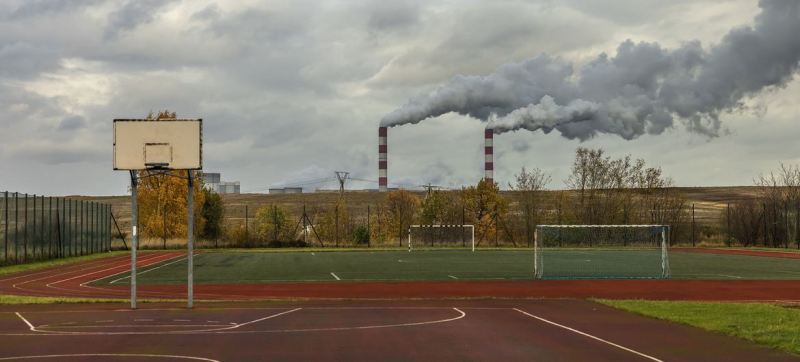- Govt to cut savings certificate profit rates from January |
- Gold prices hit fresh record in Bangladesh within 24 hours |
- Election to be held on time, Prof Yunus tells US Special Envoy |
- Moscow wants Dhaka to reduce tensions domestically, also with Delhi |
- Saarc experts meet to reduce livestock-origin greenhouse gases |
UN Warns Wildfires and Climate Change Worsen Air Quality

A school playground in the Belchatow neighbourhood of Kleszczow, Poland, near a coal-fired power plant. (file)
As billions continue to breathe polluted air that causes more than 4.5 million premature deaths every year, UN climate experts on Friday highlighted how damaging microscopic smoke particles from wildfires play their part, travelling halfway across the world.
“Air quality respects no boundaries,” said Lorenzo Labrador, Scientific Officer at the World Meteorological Organization (WMO). “The smoke and the pollution from the wildfires in this record-breaking season in the Iberian Peninsula have already been detected over Western Europe and can travel throughout the rest of the continent.”
Presenting the latest WMO Air Quality and Climate Bulletin, which draws on different global datasets, Mr. Labrador announced a continuing pattern of pollution “degradation” worldwide.
He pointed to a 2024 world map showing telltale fine particle markers, known as PM2.5, from wildfires concentrated in deep red blotches in Chile, Brazil and Ecuador, along with Canada, central Africa and Siberia.
The data confirms a disturbing trend in declining air quality already noted in previous years.
“We know that the wildfire season tends to be stronger and longer every year as a result of climate change,” Mr. Labrador explained.
In more positive news, the WMO scientist highlighted a reduction in emissions in some parts of the world, “particularly eastern China and Europe, year on year.”
“When we see that countries, regions or cities are taking measures to fight against bad air quality, it works,” said Paolo Laj, Chief of Global Atmosphere at WMO.
A good example is eastern China, in cities such as Shanghai, where progress has been made by opening more parks and planting more trees.
And although there is still heavy vehicle traffic, many are now electric, WMO spokesperson Clare Nullis noted.
Despite these successes, very few cities worldwide have air quality levels below those recommended by the UN World Health Organization (WHO), stressed Mr. Laj. “This means that, despite recent improvements, air quality remains a significant public health concern.”
He explained that although major pollutants such as sulphur dioxide (SO₂) and nitrogen oxides (NOₓ) are decreasing as emission controls take effect, ground-level ozone – the main ingredient of smog – has not declined.
“This is partly a consequence of global warming, as ozone is a secondary pollutant formed through chemical reactions in the atmosphere that require sunlight,” Mr. Laj added.
Covering wildfires, winter fog, shipping emissions and pollution in urban spaces, the WMO air quality bulletin highlights the close connection between air quality and climate change.
“Climate change and air quality cannot be addressed in isolation. They go hand in hand and must be tackled together to protect the health of our planet, our communities and our economies,” said WMO Deputy Secretary-General Ko Barrett.
The UN is leading efforts to tackle household air pollution, one of the world’s greatest public health threats and particularly harmful to children.
“The good news is that cleaner cooking technology is plentiful, relatively inexpensive, and already helping to save lives,” insisted Martina Otto, Head of the Secretariat of the Climate and Clean Air Coalition, hosted by the UN Environment Programme (UNEP).

